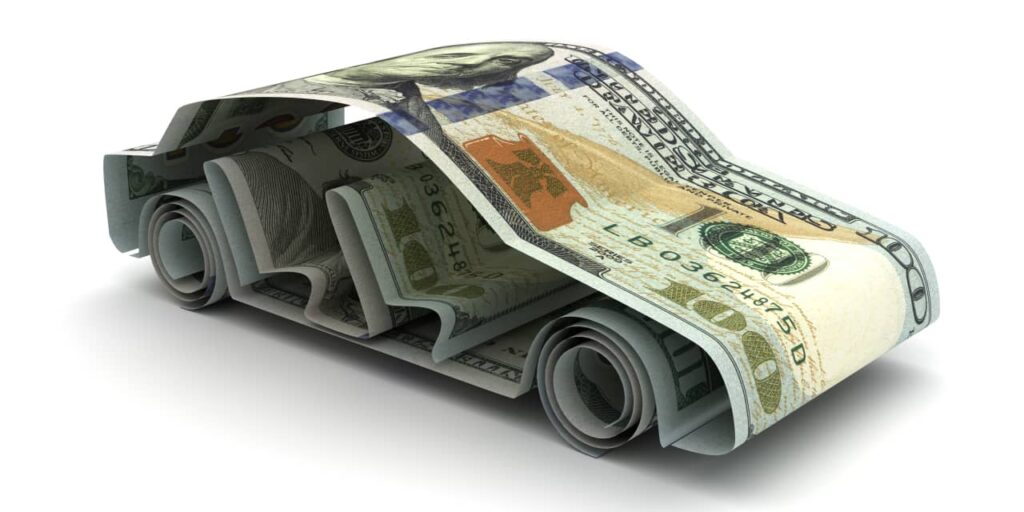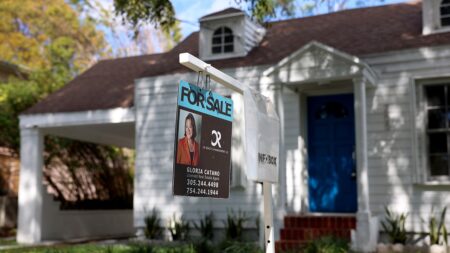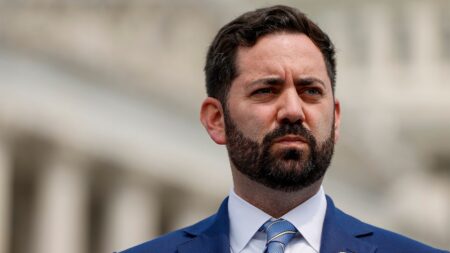Anyone already feeling burned by sharp increases in their auto insurance rates over the last year should buckle up — it’s only getting more expensive.
Car insurance premiums in the U.S. will continue to climb this year after rising more than 43% since January 2022, new research from Bankrate shows.
“While we hope to see rates stabilize soon, that likely won’t happen until at least 2025,” Bankrate analyst Shannon Martin said in a statement .
The national average cost for full coverage car insurance was $2,543 per year as of January, up 26% from $2,014 in January 2023 and $1,771 in January 2022, according to Bankrate.
‘I can barely afford it with a decent income’
Those who’ve seen their bills shoot up include Los Angeles resident Karina Martinez. Her auto insurance jumped to $212 from $121 per month for her 2013 BMW last year. “I have no accidents, no claims, no tickets. I drive minimally on weekends since I work from home,” she said.
Martínez had tried in the past to negotiate a lower rate with her insurer, but was unsuccessful. “Because of my experience not being able to get any answers, I just did not challenge the rate hike in 2023. It’s futile,” she told MarketWatch. As premiums continue to increase, she said, “It’s hard when everyone is raising prices. I can barely afford it with a decent income, I can’t imagine how people who are struggling financially cope.”
Why insurance rates are going up
The price increases are due in part to insurance companies reassessing their risk models to account for increasing claims due to the higher cost of vehicle repairs and extreme weather, Martin said.
Drivers who have low credit-based insurance scores (which predicts how likely you are to file a claim and is different from the credit score lenders use) are paying even more: $4,338 per year on average, according to Bankrate.
More hikes could be coming soon, according to preliminary filings for rate increases in the first half of 2024 sent by insurers to state insurance commissioners, said Stephen Crewdson, a senior director in the global insurance intelligence group at J.D. Power.
If insurers follow through with the proposed rates, they could be “as aggressive” as last year, which was already a “watershed year” for premium hikes, he said.
“It was unlike what we’ve seen before in the industry” in over two decades, Crewdson said.
Because auto insurance is a required purchase in almost every U.S. state, insurance companies have to get regulatory approval to increase their rates.
Paul Newsome, a managing director and senior research analyst at Piper Sandler who covers the insurance sector, said rate hikes have been primarily driven by auto insurers’ own rising costs — from pricier cars and car parts to a shortage of body-shop workers that makes repairs more expensive and time consuming.
Many insurers need to increase premiums to recoup billions they lost over the last two years, he said.
“They have been suffering huge losses until basically this quarter,” he said. “The price increases for a lot of insurance companies are not optional.”
When asked whether car insurance rates are expected to go up again this year, a representative for the Insurance Information Institute, a group that represents the insurance industry, did not answer the question directly, but said auto insurers have been coping with poor financials for the last few years.
“There’s no question, the U.S. personal auto insurance market is being hit hard in this inflationary environment,” said Scott Holeman, a spokesperson for III. “But in addition to inflation, we’re also seeing a dramatic increase in accidents on American roadways.”
Losses for insurance companies have been increasing because there are more crashes, and more crashes that are severe, Holeman said. Fatalities and injuries on the road are leading increasingly to lawsuits, which translate into higher costs for insurers. “That litigation has a direct impact on insurance premiums,” Holeman said. In addition, supply-chain problems are still leading to high costs for cars and their replacement parts, and cars with more advanced technology are more expensive to repair, he said.
Consumers are feeling these effects as well. Rising costs for vehicles, insurance, fuel and repairs brought the monthly expense of owning a car to $1,015 in 2023, which adds up to $12,182 per year, up over 13% year on year, according to AAA. A household now needs to earn about $100,000 a year to afford a new car, MarketWatch reported last fall.
More drivers are skipping auto insurance altogether
While car ownership in the U.S. remains high, the rising cost of ownership has led to an increase in uninsured drivers. The number of households who own a car but do not have auto insurance rose to 5.7% in the first half of 2023 from 5.3% in the second half of 2022, according to J.D. Power surveys. While that share decreased slightly at the end of last year, it rebounded to 6.2% in January, Crewdson told MarketWatch.
Uninsured drivers can face fines for not having coverage and assume a lot of additional risk. Those who are at fault may need to cover the other driver’s and any other passengers’ losses, including medical expenses, said Crewdson. If drivers can’t cover these expenses out of pocket, the dispute may be litigated in court.
Bankrate analyzed premiums in the 26 largest metro areas and found that drivers in the Detroit area are paying the most for insurance as a percentage of household income ($5,687), followed by Miami ($4,213), Tampa ($4,078), Philadelphia ($4,753), and Las Vegas ($3,626).
On the other end, drivers in the Seattle metro area pay the least as a share of income ($1,759), followed by Boston ($2,094), Washington, D.C. ($2,430), Portland ($1,976), and Minneapolis ($2,044).
Doug Heller, director of insurance at the Consumer Federation of America, said he’s worried that much-higher premiums could stick around even after insurers’ costs level out again.
He noted that companies were slow to lower rates or otherwise pass on gains to customers in the early days of the pandemic — when many drivers stayed off the roads and the costs of covering claims dropped, boosting insurer’s margins.
Insurance companies pocketed a good chunk of that windfall, he said — though some insurers did give drivers rebates and other breaks on insurance costs during the pandemic.
“It’s a bit of a heads we win, tails you lose,” he said. “I’m a little concerned we’re gonna be stuck with high prices even as the cost associated with insurance policies goes down.”
With rates increasing so significantly, more customers will feel forced to reduce their auto coverage or forgo it completely, Heller said.
“I’m worried that these prices are going to mean more dangerous, less protected roads,” he said.
Tips to lower your car insurance premium
No. 1: Shop around — often.
This is probably the most important thing you can do to lower your insurance costs — especially if you’ve been insured through the same company for a long time, Heller said.
Typically, he recommends consumers shop around for a better car insurance policy every two to three years. But nowadays, you’re better off doing it once a year or every time your policy renews.
“It’s not going to relieve all the pain,” he said, but in some cases it help you save as much as 30% on your coverage.
No. 2: Check the mileage your insurer has on file.
Heller also suggested calling your insurance company to check that their estimate of your annual mileage is still accurate.
Mileage is one of the many factors insurance companies take into account when setting your rate. If you’re driving less these days, that could lower your premium — though just how much mileage is factored into your premium depends on your insurer.
No. 3: If you also own your home, bundle your home and auto insurance.
“Many insurers will give you a break if you buy two or more types of insurance,” according to the Insurance Information Institute. Drivers can also get a reduction by having more than one car insured with the same insurer, and some get lower rates as long-time customers (but again, shop around often).
No. 4: Ask for a higher deductible.
You’re rolling the dice a bit here since your insurance won’t kick in until you meet your deductible, but if you can afford to pay a higher deductible in the event that you have an accident, this can help lower your premiums substantially, according to the Insurance Information Institute, which provides a number of other suggestions here.
Check out On Watch by MarketWatch, a weekly podcast about the financial news we’re all watching — and how that’s affecting the economy and your wallet. MarketWatch’s Jeremy Owens trains his eye on what’s driving markets and offers insights that will help you make more informed money decisions. Subscribe on Spotify and Apple.
Read the full article here












